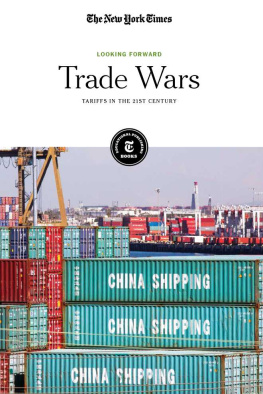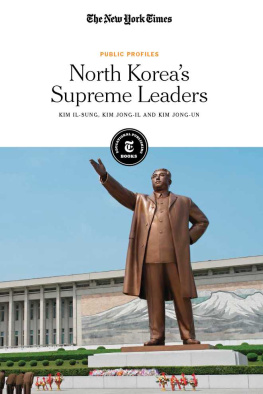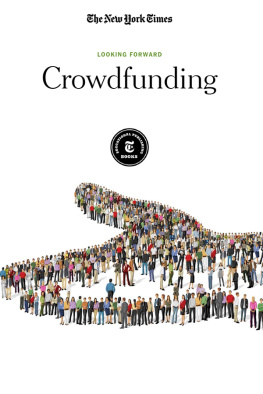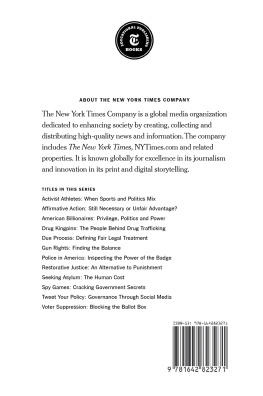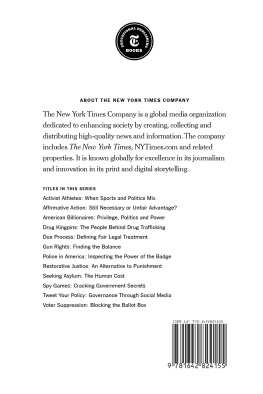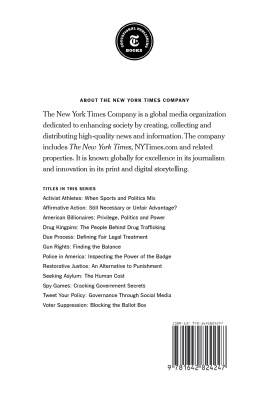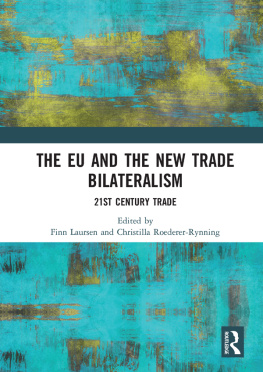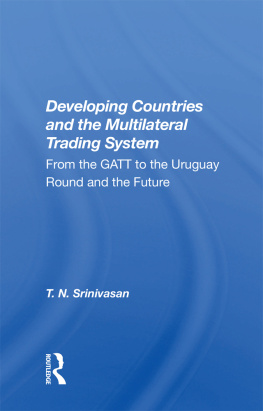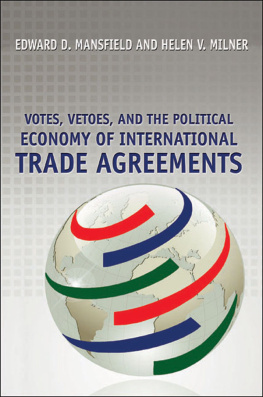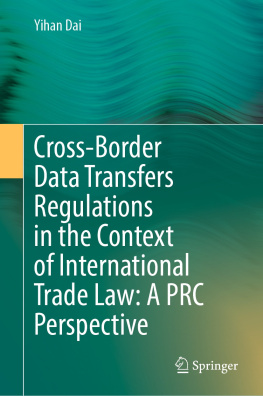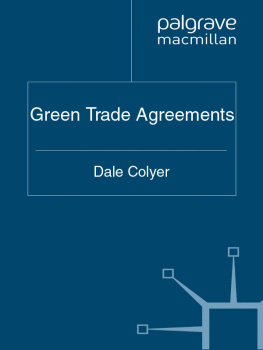Published in 2019 by New York Times Educational Publishing in association with The Rosen Publishing Group, Inc.
29 East 21st Street, New York, NY 10010
Contains material from The New York Times and is reprinted by permission. Copyright 2019 The New York Times. All rights reserved.
Rosen Publishing materials copyright 2019 The Rosen Publishing Group, Inc. All rights reserved. Distributed exclusively by Rosen Publishing.
First Edition
The New York Times
Alex Ward: Editorial Director, Book Development Phyllis Collazo: Photo Rights/Permissions Editor Heidi Giovine: Administrative Manager
Rosen Publishing
Megan Kellerman: Managing Editor Marcia Amidon Lusted: Editor Greg Tucker: Creative Director Brian Garvey: Art Director
Cataloging-in-Publication Data
Names: New York Times Company.
Title: Trade wars: tariffs in the 21st century / edited by the New York Times editorial staff.
Description: New York : New York Times Educational Publishing, 2019. | Series: Looking forward | Includes glossary and index. Identifiers: ISBN 9781642821406 (library bound) | ISBN 9781642821390 (pbk.) | ISBN 9781642821413 (ebook) Subjects: LCSH: International tradeJuvenile literature. |
Foreign trade regulationJuvenile literature.
Classification: LCC HF1379.T733 2019 | DDC 382'.92dc23
Manufactured in the United States of America
On the cover: Shipping containers, many from China, are stacked at the Port of Los Angeles in October 2013; Monica Almeida/The New York Times.
Contents
CHAPTER 1
Tariffs and Trade
CHAPTER 2
America First?
CHAPTER 3
The World Responds
CHAPTER 4
Escalation and Consequences
Introduction
for as long as the United States has been a country, and even when it was still a colony of Great Britains, it has been engaged in trade with other countries. Trade allows countries to buy and sell goods and services from each other, providing economic benefits for each country and allowing citizens to buy what they need and what their own country may not be able to produce.
However, trade is not just about buying and selling. It also plays a big role in the relationships and alliances between countries. It can be used to establish friendly relationships between countries, or withdrawn to express displeasure over another countrys policies and actions. An imbalance in trade, where one country imports more from other countries than it sells, can create a trade deficit. A trade surplus occurs when a country sells more goods than it imports.
Trade also brings with it the issue of tariffs, which are taxes imposed on goods as they pass from one country to another. Tariffs can be charged on imports and exports, and they are usually set as a way for a government to make money off trade with another country. However, they can also be used as a form of protectionism, which essentially makes goods from other countries more expensive so that consumers will buy goods made in their own countries, boosting those local manufacturers. Tariffs may also be placed on goods coming from another country as a punishment for that countrys actions, such as military aggression or human rights violations. Governments can also create free trade agreements with each other, in which they have agreed not to charge each other tariffs on imported or exported goods.

DOUG MILLS/THE NEW YORK TIMES
From left: German Chancellor Angela Merkel, Canadian Prime Minister Justin Trudeau, President Donald Trump, French President Emmanuel Macron, European Commission President Jean-Claude Juncker and Japanese Prime Minister Shinzo Abe, at the G-7 summit meeting in La Malbaie, Quebec, Canada, June 8, 2018. Trump has found himself isolated on the global stage for taking actions viewed by Americas closest allies as destructive and even illegal.
The United States has imposed tariffs throughout its history but has also participated in many free trade agreements and groups, such as the World Trade Organization (WTO), the North American Free Trade Agreement (Nafta), the South Korea and U.S. Free Trade Agreement and the Trans-Pacific Partnership (TPP).
When Donald J. Trump campaigned for president in 2016, one of his campaign promises revolved around helping American manufacturing jobs by renegotiating trade agreements and possibly placing tariffs on goods from other countries. Many Americans found his platform appealing because they felt that too many American factories and their jobs were being lost to foreign competition, particularly from places such as China, which could produce goods much more cheaply than the United States. Trump promised to impose tariffs on goods made in China and Mexico, whose products compete with those made in America, even though experts felt that imposing tariffs would violate international trade rules and also possibly spawn a trade war. He also said he was considering leaving the TPP and Nafta.
In early 2018, President Trump began levying tariffs on goods from countries such as China, Mexico and even Canada. The backlash from other countries has been strong, and even in the U.S. government, there are fears that these tariffs will actually hurt American businesses and consumers and may also start a trade war. To explore the issue of trade, tariffs and trade wars, it is necessary to look at some of the presidents actions that have led to this point. It is also helpful to consider how his Make America Great Again slogan and economic protectionism have forced other countries to respond and how those responses may have affected the economies of both the United States and its partners, its relationship with its allies and the world economy. In an economy that is now global, with every country connected to others in a web of trade agreements and tariffs, what the United States does will undeniably have global repercussions.
CHAPTER 1
Tariffs and Trade
As President Trump began to address the issue of trade and tariffs and put into motion his campaign promises about protecting American jobs and companies, it created a storm of opinions about the possible and probable repercussions of enacting tariffs and withdrawing from established trade agreements. Economists warned of the effects on American industries, but President Trump continued with his plan to correct what he considered to be unfair practices against the United States by its trading partners.
Will 2018 Be the Year of Protectionism? Trump Alone Will Decide
BY ANA SWANSON | JAN. , 2018
Washington The Trump administration will soon face several major trade decisions that will determine whether the White House adopts the type of protectionist barriers that President Trump campaigned on but that were largely absent during his first year in office.
So far, the presidents actions on trade have been more moderate than his campaign speeches suggested. Mr. Trump withdrew the United States from a Pacific Rim trade pact and opened other, existing trade deals to renegotiations. But he has yet to impose any of the broad tariffs that he has argued are necessary to give American companies a fair shot in a global economy.
In 2018, Mr. Trump will have several opportunities to punish foreign rivals as the final decider in a series of unusual trade cases that were initiated last year. These cases, which were brought under little-used provisions of trade laws, give the president broad authority to impose sweeping tariffs or quotas on foreign products.

